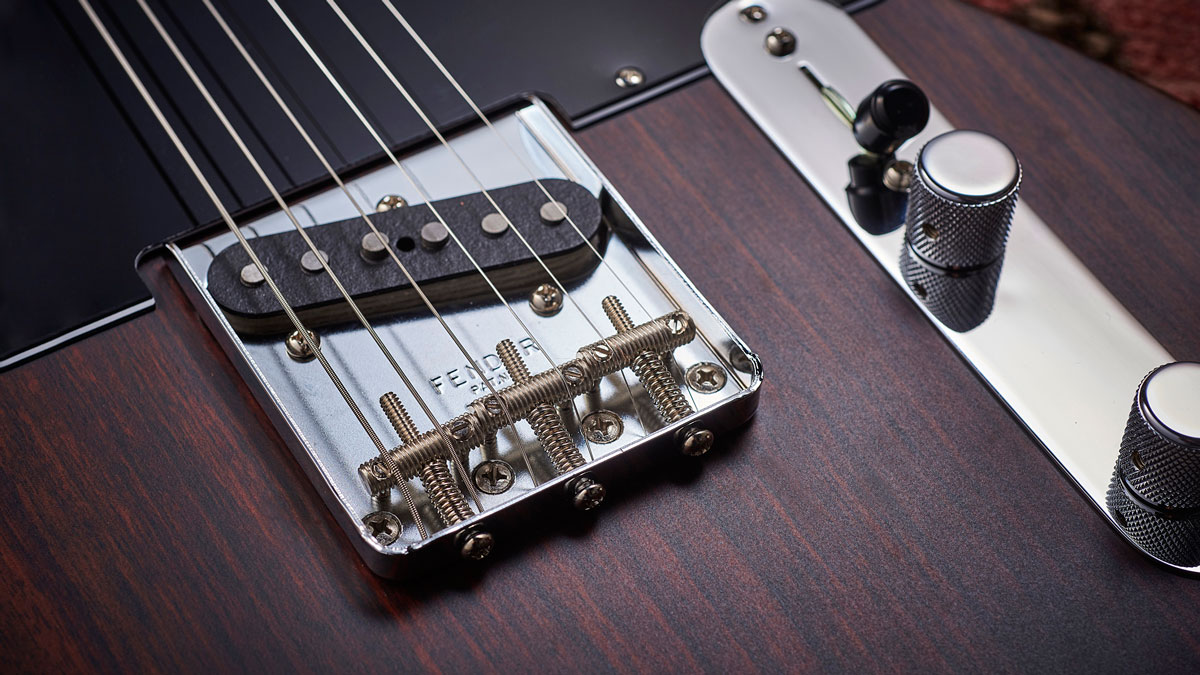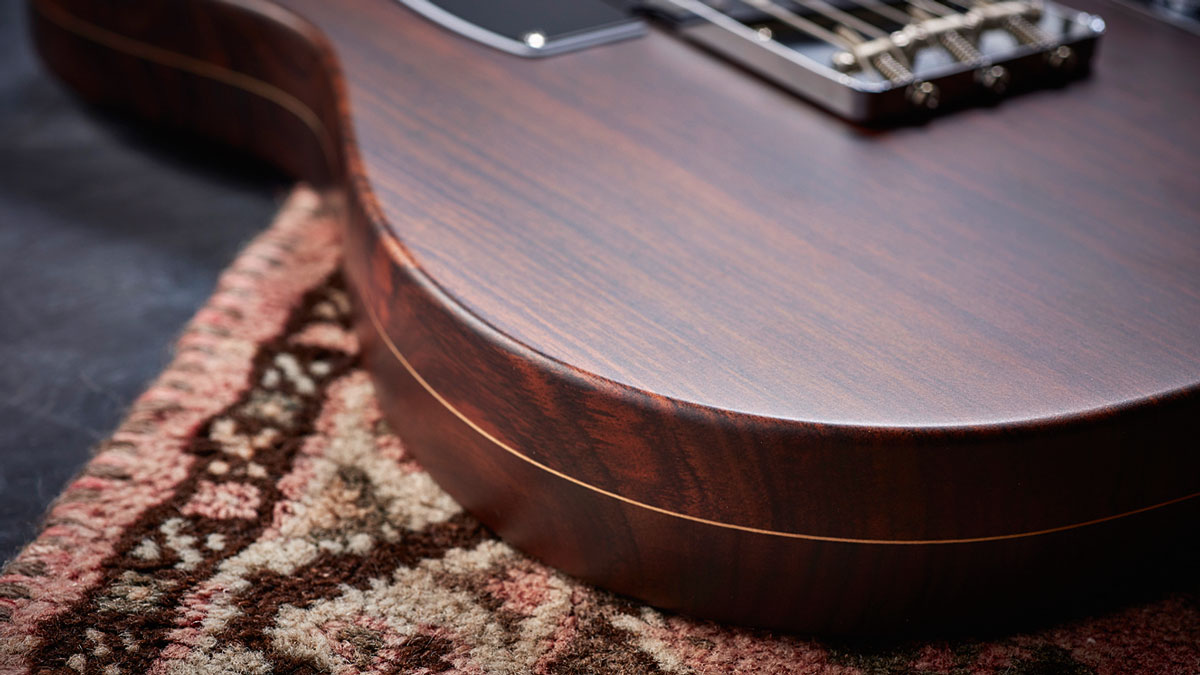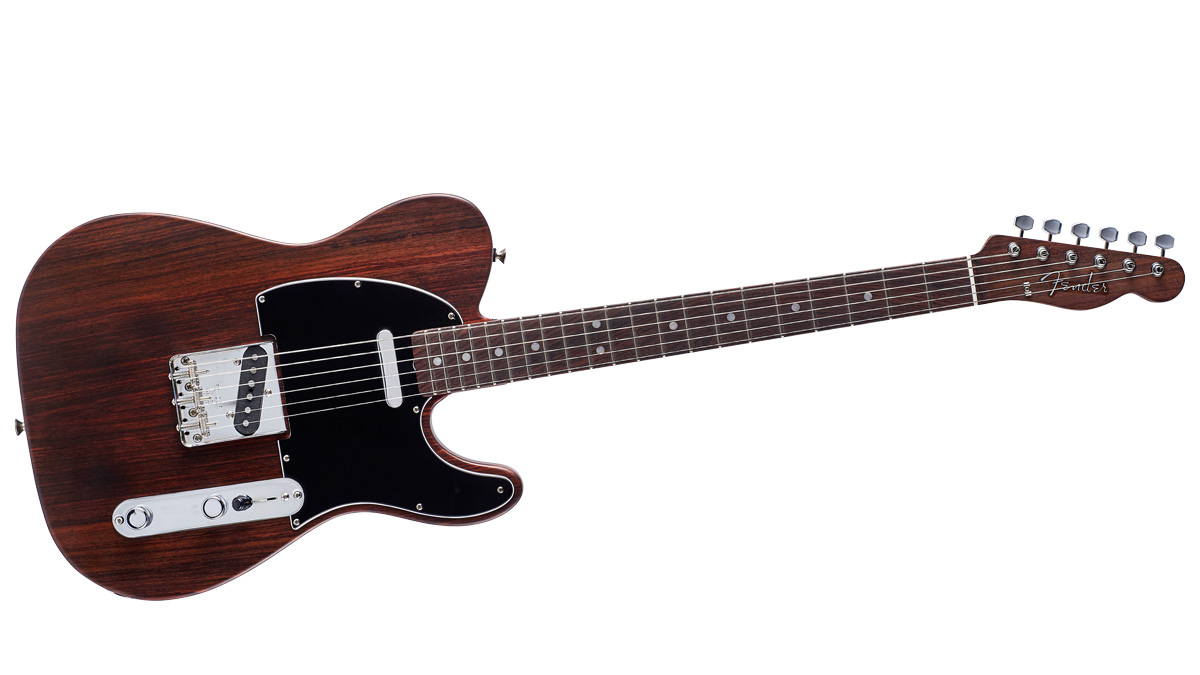MusicRadar Verdict
An incredibly cool guitar that won't break the bank.
Pros
- +
Iconic model.
- +
Understated looks.
- +
Great range of sounds.
- +
Modern, playable neck.
Cons
- -
Although versatile it might be just too ‘Beatles’ for some.
MusicRadar's got your back
Almost 50 years since The Beatles brought London’s West End to a standstill with a free concert on the roof of their Apple building in Savile Row, and where George Harrison debuted an unusual dark-brown Telecaster, Fender is issuing a limited edition model to honour George, the gig and that guitar.
The legendary instrument, put together by Roger Rossmeisl (of Rickenbacker design fame) and Phil Kubicki (who went on to create the fantastic Factor basses), was the prototype of a short run or two of instruments that has become hugely collectable.
Built from solid East Indian rosewood it was a sultry looking creation that reflected its recipient perfectly: dark, handsome, and understated, but under that subtle exterior lurking a top-class music maker.
Fender gifted it to Harrison for his 25th birthday, the same day Eric Clapton presented George with the Leslie cabinet that he used on the Let It Be solo itself (the ‘single’ version). Of course, there have been rosewood reissues before, including the brilliant 80s ones from Fender Japan; and master builder Paul Waller’s stunning 2013 recreation with specs taken direct from Harrison’s own instrument.
But this limited run of 1,000 is special in its own right: after the latest CITES regulations rosewood will be scarcer than ever; the model has received a couple of popular player updates including a flatter radius ‘board, bigger frets and chambering to reduce weight; and it’s pretty realistically priced, too.
Among the many Tele adaptations, the rosewoods look the least ostentatious. From a few rows back it does seem like just a brown guitar (ornithological ‘twitchers’ talk about ‘little brown birds’ or ‘LBBs’ signifying a variety of similarly plain-looking species) but as with this Tele, some of those LBBs are fine, rare and beautiful in their own right. So think of this as the Blyth’s reed warbler of guitars!

As stated, the entire guitar is built from rosewood, save for the thin maple veneer or ‘binder’ that separates top and back, both of which are two-piece spreads. Like George’s original the body is finished in satin polyurethane. The neck features a thinner, more open-pore urethane and feels nicely drag-free to the touch.
The pickups are grey-bottom ‘64-style single coils - the staggered-pole rear unit housed, of course, in the classic three-saddle ‘ashtray’ bridge (actually the ashtray was the bridge cover, but let’s not split hairs), while at the neck is that diminutive chrome-covered affair that divides opinion - people say it’s either a waste of space, or a thing of sonorous beauty; we fall into the latter camp.
Controls are basic master volume and tone governed by a three-way blade switch, all mounted on the simplest chrome plate. Tuners are F-stamped Kluson-alikes while the four-bolt neck plate carries a George Harrison signature and ‘Om’ symbol. Black-white-black pickguard, artificial bone nut and chrome string ferrules complete the elemental inventory.
Sounds
Anyone who’s played one of Fender’s mid-60s-style, C-shaped necks with a 241mm (9.5”) radius and 6105 frets, knows how natural it feels in the hand. Even those used to the 184mm (7.25”) vintage radius and thin frets will take just minutes to acclimatise - although in our experience it’s harder going back.
Of course, the Telecaster is so ubiquitous that this is no mere ‘Beatles guitar’. It will take virtually anything that any player throws at it - think of just a few Tele players, from James Burton to Ted Greene, Danny Gatton to Richie Kotzen, Jim Mullen to Albert Collins, Jimmy Page to Muddy Waters and so many more.
Short of whammy bar antics it will deal with any technique without batting a musical eyelid, and that couldn’t honestly be said about an original. Sound-wise, compared to our own Custom Shop ‘62 Tele it’s perhaps a tad lighter toned, but that could be the steel threaded saddles compared to the brass of the ‘62… or indeed the rosewood body’s chambering, which we know can increase top and bottom while scooping an ounce or two of middle.
Through our resident Vox AC15 and this reviewer’s Blues Junior, there was hardly a sound it couldn’t muster. At the neck it delivers warm jazz and sweet Hendrix-y rhythm (check out George’s lovely playing on Don’t Let Me Down), while conjuring a dark, angry bark or crystal clear ‘clang’ at the bridge. And of course you get those super funky, spiky country or Zeppelin-style leads in the middle.
Clean or dirty it handles everything with class - no wonder the Tele has fuelled some of the finest music for almost eight decades.

To be honest we were initially a bit sniffy about this guitar. We felt the modern tweaks that Fender has introduced simply altered things too much to make it a true artist model. But spending time with the instrument and thinking about what Harrison himself might have said - prior to receiving his rosewood model he wasn’t a Tele player at all, but jumped in with both feet to play it live in front of potentially millions - we’ve revised that view.
We think George would have loved how easy and rewarding the neck is to play; and enjoyed the beautifully dynamic tone that chambering has brought to bear (not to mention the reduced weight on those diminutive shoulders). We also reckon he would have applauded Fender for keeping it a limited edition but maintaining a reasonable price - remember it’s a grand less than the latest Custom Shop Relics are making with the most recent price hike.
Best of all though, a bit like Brad Paisley Tele it’s such an easy guitar to live with that we could see George sitting round happily noodling on it - just as we have done for the last couple of weeks.
And if there are any Beatles fans who fancy a George-style guitar that’s immensely cool in its own right, is inherently one of the most versatile instruments ever but that won’t completely break the bank, we can’t think of a better place to begin that long and winding road.
“Its mission is simple: unleash the power of any amplifier or line-level source without compromise”: Two Notes promises a “watershed” in tube amp control with the Torpedo Reload II
“I’m looking forward to breaking it in on stage”: Mustard will be headlining at Coachella tonight with a very exclusive Native Instruments Maschine MK3, and there’s custom yellow Kontrol S49 MIDI keyboard, too
“The thing from the agency said, ‘We want a piece of music that is inspiring, universal, blah-blah, da-da-da...' and at the bottom it said 'and it must be 3 & 1/4 seconds long’“: Brian Eno’s Windows 95 start-up sound added to the US Library of Congress










